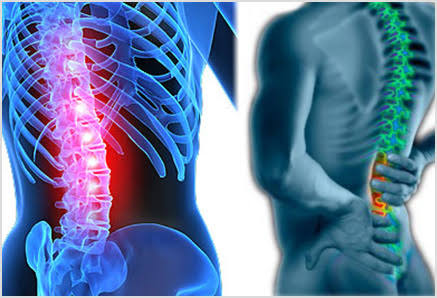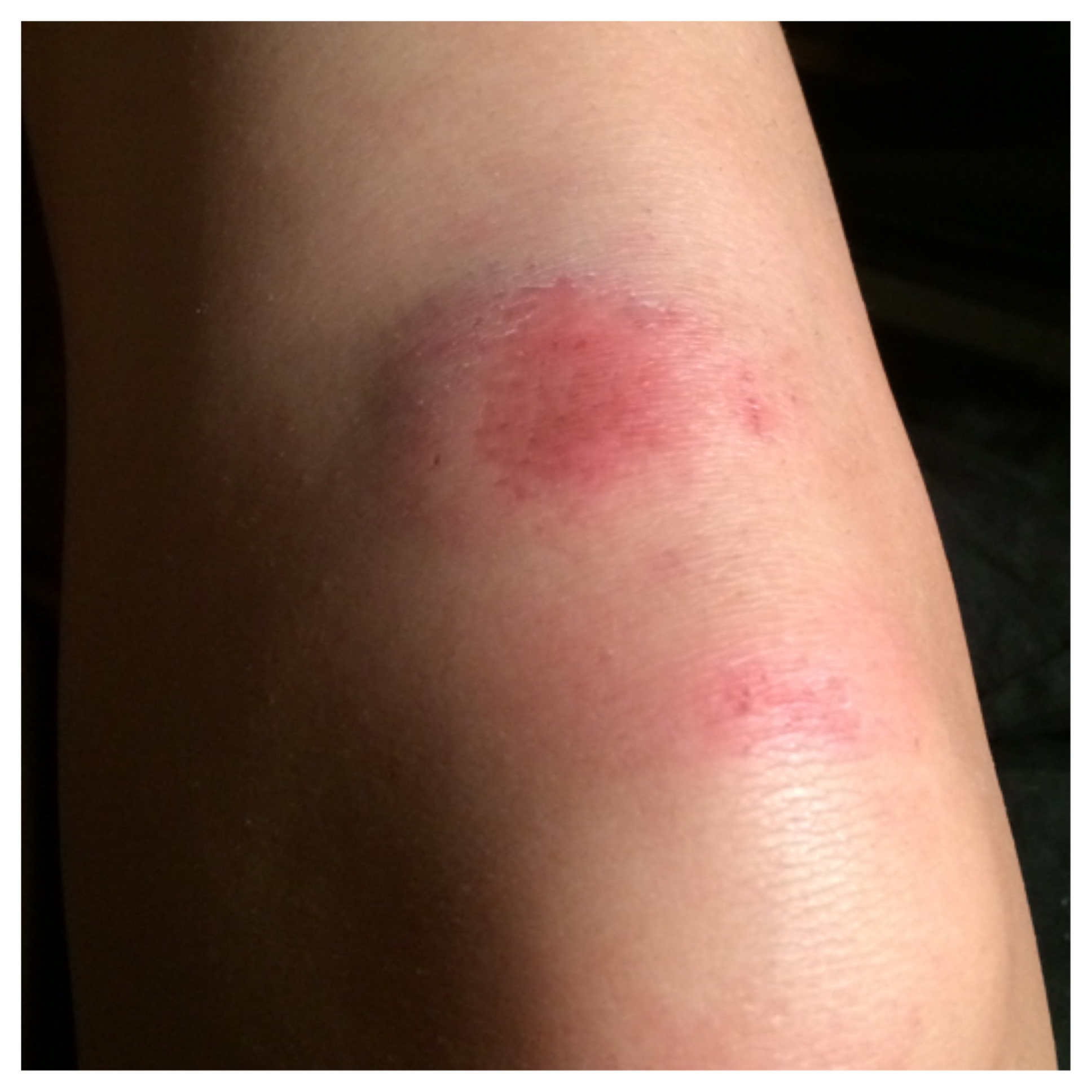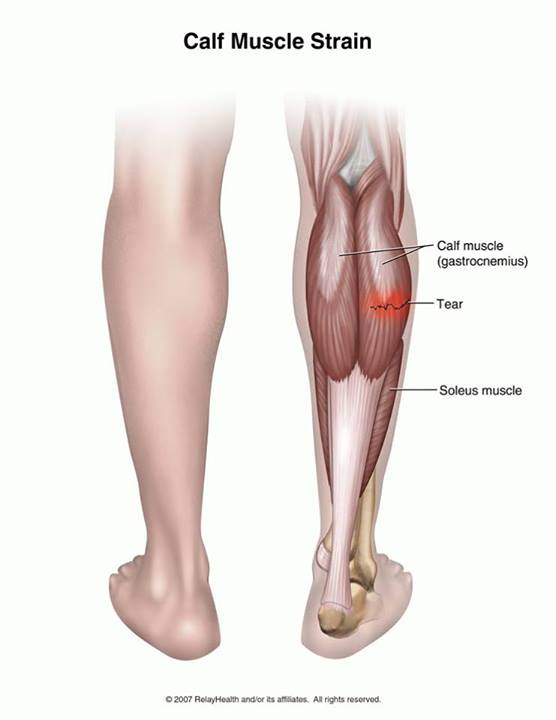Lumbar Spondylosis

Lumbar Spondylosis is a condition associated with degenerative changes in the intervertebral discs and facet joints. Spondylosis, also known as spinal osteoarthritis, can affect the lumbar, thoracic, and/or the cervical regions of the spine. Although aging is the primary cause, the location and rate of degeneration is individual. As the lumbar discs and associated ligaments undergo aging, the disc spaces frequently narrow. Thickening of the ligaments that surround the disc and those that surround the facet joints develops. These ligamentous thickening may eventually become calcified. Compromise of the spinal canal or of the openings through which the spinal nerves leave the spinal canal can occur.
Spondylosis often affects the lumbar spine in people over the age of 40. Pain and morning stiffness are common complaints. Usually multiple levels are involved (eg, more than one vertebrae). The lumbar spine carries most of the body’s weight. Therefore, when degenerative forces compromise its structural integrity, symptoms including pain may accompany activity. Movement stimulates pain fibers in the annulus fibrosus and facet joints. Sitting for prolonged periods of time may cause pain and other symptoms due to pressure on the lumbar vertebrae. Repetitive movements such as lifting and bending (eg, manual labor) may increase pain.
Spondylosis Definition
SPONDYLO is a Greek word meaning vertebra. Spondylosis generally mean changes in the vertebral joint characterized by increasing degeneration of the intervertebral disc with subsequent changes in the bones and soft tissues. Disc degeneration, spinal canal stenosis, spondylolisthesis are the resultant pathological changes.
Lumbar spondylosis encompasses lumbar disc bulges, herniations, facet joint degeneration, and vertebral bony overgrowths (osteophytes). Degenerative changes, including osteophyte formation, increase with age but are often asymptomatic. Disc herniation is symptomatic when it causes nerve root compression and spinal stenosis. Common symptoms include low back pain, sciatica, and restriction in back movement. Treatment is usually conservative, although surgery is indicated for spinal cord compression or intractable pain. Relapse is common, with patients experiencing episodic back pain.
weak. You may even limp.
What causes spondylolisthesis?
The bones in your spine come together at several small joints that keep the bones lined up while still allowing them to move. Spondylolisthesis is caused by a problem with one or more of these small joints that allows one bone to move out of line.
Spondylolisthesis may be caused by any of a number of problems with the small joints in your back. You could have:
A defective joint that you’ve had since birth (congenital).
A joint damaged by an accident or other trauma.
A vertebra with a stress fracture caused from overuse of the joint.
A joint damaged by an infection or arthritis.
Spondylolisthesis affects children and teens involved in sports. Some sports, such as gymnastics or weight lifting, can overuse back bones to the point of causing stress fractures in vertebrae, which can result in spondylolisthesis.
Older adults can develop spondylolisthesis, because wear and tear on the back leads to stress fractures. It can also occur without stress fractures when the disc and joints are worn down and slip out of place.
What are the symptoms?
Symptoms of spondylolisthesis may include:
Back or buttock pain.
Pain that runs from the lower back down one or both legs.
Numbness or weakness in one or both legs.
Difficulty walking.
Leg, back, or buttock pain that gets worse when you bend over or twist.
Loss of bladder or bowel control, in rare cases.
Sometimes spondylolisthesis causes no symptoms at all.
Risk factors for developing lumbar spondylosis
Age: As a person ages the healing ability of the body decreases and developing arthritis at that time can make the disease progress much faster. Persons over 40 years of age are more prone to developing lumbar spondylosis.
Obesity: Overweight puts excess load on the joints as the lumbar region carries most of the bodys weight, making a person prone to lumbar spondylosis.
Sitting for prolonged periods: Sitting in one position for prolonged time which puts pressure on the lumbar vertebrae.
Prior injury: Trauma makes a person more susceptible to developing lumbar spondylosis.
Heredity or Family history
Pathology
The degenerative effects of ageing can cause the fibers of the discs to weaken, causing wear and tear. Constant wear and tear and injury to the joints of the vertebrae causes inflammation in the joints. Degeneration of the discs leads to the formation of mineral deposits within the discs. The water content of the center of the disc decreases with age and as a result the discs become hard, stiff, and decreased in size. This, in turn, results in strain on all the surrounding joints and tissues, causing the sensation of stiffness. With less water in the center of the discs, they have decreased shock absorbing qualities. An increased risk of disc herniation also results, which is when the disc abnormally protrudes from its normal position.
Each vertebral body contains four joints that act as hinges. These hinges are known as facet joints or zygapophyseal joints. The job of the facet joins is to allow the spinal column to flex, extend, and rotate. The bones of the facet joints are covered with cartilage (a type of flexible tissue) known as end plates. The job of the end plates is to attach the disks to the vertebrae and to supply nutrients to the disc. When the facet joints degenerate, the size of the end plates can decrease and stiffen. Movement can stimulate pain fibers in the facet joints and annulus fibrosus. Furthermore, the vertebral bone underneath the end plates can become thick and hard.
Degenerative disease can cause ligaments to lose their strength. A ligament is a tough band of tissue that attaches to joint bones. In the spine, ligaments connect spinal structures such as vertebrae and prevent them from moving too much. In degenerative spondylosis, one of the main ligaments (known as the ligamentum flavum) can thicken or buckle, making it weaken.

Knobby, abnormal bone growths (known as bone spurs or osteophytes) can form in the vertebrae. These changes can also cause osteoarthritis. Osteoarthritis is a disease of the joints that is made worse by stress. In more severe cases, these bones spurs can compress nerves coming out of the spinal cord and/or decreased blood supply to the vertebrae. Areas of the body supplied by these nerves may become painful or develop loss of sensation and function.
Physical Examination
A thorough physical examination reveals much about the patient’s health and general fitness. The physical part of the exam includes a review of the patient’s medical and family history. Often laboratory tests such as complete blood count and urinalysis are ordered. The physical exam may include:
Palpation (exam by touch) determines spinal abnormalities, areas of tenderness, and muscle spasm.
Range of Motion measures the degree to which a patient can perform movement of flexion, extension, lateral bending, and spinal rotation.
A neurologic evaluation assesses the patient’s symptoms including pain, numbness, paresthesias (e.g. tingling), extremity sensation and motor function, muscle spasm, weakness, and bowel/bladder changes. Particular attention may be given to the extremities. Either a CT Scan or MRI study may be required if there is evidence of neurologic dysfunction.
X-rays and Other Tests
Radiographs (X-rays) may indicate loss of vertebral disc height and the presence of osteophytes, but is not as useful as a CT Scan or MRI. A CT Scan may help reveal bony changes sometimes associated with spondylosis. An MRI is a sensitive imaging tool capable of revealing disc, ligament, and nerve abnormalities. Discography seeks to reproduce the patient’s symptoms to identify the anatomical source of pain. Facet blocks work in a similar manner. Both are considered controversial.
The physician compares the patient’s symptoms to the findings to formulate a diagnosis and treatment plan. The results from the examination provide a baseline from which the physician can monitor and measure the patient’s progress.
Physical Therapy Management in Lumbar Spondylosis
Goals
Relief of pain .
Restoration of movements.
Strengthening of muscles.
Education of posture.
Analysis of precipitating factors to reduce recurrence of the patient’s problems.
Management of acute symptoms
Rest and Support- With acute joint symptoms, a lumbar corset may be helpful to provide rest to inflamed facet joints. When acute symptoms decrease, discontinue corset by gradually increasing the time without the corset. Often the most comfortable position is flexion, esp. if there are neurologic signs due to decrease in the foraminal space from joint swelling or osteophytes.
Education of posture- Head, neck and shoulders should be supported by the back rest of chair with a small pillow in the lumbar spine, the feet supported and the arm resting on arm rests or on a pillow in the lap.
Modalities- Hot or cold packs on the affected area, ultrasound and electric stimulation are some of the other treatments which are used to decrease pain and reduce muscle spasm.
Relaxation- by soft tissue techniques. Teach self relaxation techniques,e.g like deep breathing exercises and physiological relaxation (Laura Mitchell method) and hydrotherapy.
Traction- Gentle intermittent joint distraction and gliding techniques may inhibit painful muscle responses and provide synovial fluid movement within the joint for healing.
Gentle ROM within the limits of pain.
Management of subacute and chronic phase
Increase ROM- Free active exercises of lumbar spine. Pelvic tilting forward, backward in crook lying, quadriped, sitting and standing.
Mobilization- Restoration of intersegmental mobility by accessory pressure enables the patient to regain full functional painfree movement.
stretching exercises.
Strengthening exercises.
Posture correction.











